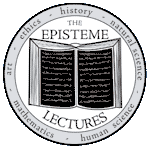Comprehension is the better part of argument. Despite the tempting simplicity of spewing quotes, reading and understanding them first helps.
“While Ayn Rand retains the traditional classification of art as well as the idea that the arts are essentially mimetic in nature she rejects the traditional view that the primary purpose of art is to afford pleasure and convey value through the creation of beauty, which she does not regard as a defining attribute. In her view, the primary purpose of art is much broader: it is the meaningful objectification of whatever is metaphysically important to man.” My emphasis.
Well golly gee, that sounds awful like recognizing art that doesn’t meet typical standards of beauty may still reflect “whatever is metaphysically important to man," even if it is a blue canvas - but that's a separate battle. A “selective re-creation of reality” is anything mimetic; whenever you reproduce something, you’re picking something real (we’ve got “selective” and “reality”) and reproducing it (“re-creation” – check). Let’s review: while Ayn Rand retains that art is essentially mimetic, she holds that every piece of art is a “selective re-creation of reality,” a phrase synonymous with “mimetic”. Groundbreaking philosophy; too bad Plato didn’t copyright it when he posited that a = a.
Next: “Further, Rand holds that the distinctive character of each of the major branches of art derives from--is determined by--a specific mode of human perception and cognition.” Another shocker: modes of mimetic art derive from the way we perceive the world, almost as if we reproduce things in response to the way we perceive them. Which would mean that art is mimetic. Third time’s a charm.
Now we’re in the deep waters: “As a consequence, she argues that, technological innovations notwithstanding, no truly new categories of art are possible, only recombinations and variants of the primary forms which have existed since prehistory.” Eternally existing primary forms? If only Plato could get paid royalties (or at least get associated with a popular political movement so people would read him). Remember that whole bit about mimetic art reproducing existing elements of Plato’s realm of ideals? Probably not, but I promise, we talked about it in class for about two years. Ayn Rand sure is refuting our class discussions and the foundations of Western thought.
“According to Rand, art serves a vital psychological need that is at once cognitive and emotional. Only through art, in her view, can man summon his values into full conscious focus, with the clarity and emotional immediacy of direct perception.” The dead horse has been thoroughly beaten, so I’ll just point to that discussion we had stemming from Perkins’ book of aesthetics thought experiments, specifically where a student is told by her psychologist to experience art to regain peace.
And the big finisher: “Thus she not only identifies what art is, in terms of essential characteristics, she also provides an enriched appreciation of the importance of art in human life. Moreover, in so doing, she makes clear why much of what the artworld [sic] has promoted as the art of the past hundred years is, by objective standards, a perversion of the very concept." Forgive me for not being blown away. Not ONLY has Ayn Rand told us that art is mimetic, she’s also told us that appreciating it is important. Here’s where things get fuzzy for me though: If art is not only “selective” but its means of presentation derive from “a specific mode of human perception and cognition,” how is it in the least bit objective? If appreciation is an individual task unifying emotion and cognition in an effort to establish a unity in “human existence,” how does it reach towards anything transcendentally objective, especially when art is, by your definition with my emphasis, “the meaningful objectification of whatever is metaphysically important to man”?
If you had actually read your quote before posting it, instead of just skimming from a line with the word “art” to a line with the word “objective,” you’d know that these claims are redundant not only compared to Plato but also to what we’ve said in class.
UPDATE: If you want to find these exact quotes online, you can do it in three easy steps.
1) Google "ayn rand on art"
2) click on the first result
3) click on Introduction. Don't worry, it's on the top half of the page.


